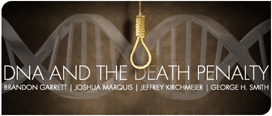The participants in this exchange certainly seem to have once piece of common ground: that if something does go wrong, we should try to find out what went wrong and fix it. Are we really trying, though? Who is “we”? How could we do better?
Take eyewitness evidence, ubiquitous and used in many tens of thousands of cases each year. Even in the narrow sliver of cases where post-conviction DNA testing can be done and actually is done, we know that eyewitness errors play a troubling role. There is a vast body of scientific research on how to improve identification procedures. More states and police departments have adopted best practices, and national policing organizations recommend as much and the changes are fairly simple – but progress is highly uneven. Traditional, non-blind lineups actually harm law enforcement first and foremost – because they lead to many more “filler” identifications that can “burn” an eyewitnesses credibility. Yet improving those procedures has been slow going. All this despite high profile DNA exonerations, which more than anything else involve eyewitness errors.
But since our primary topic is the death penalty, take a type of evidence more common in homicide investigations – confessions. All but two of the false confessions that I studied were contaminated – the innocent convicts were said to have confessed using details that only the true culprit could have known – we now know that could not have happened. Such was the seeming power of the confessions that quite a few were convicted despite exculpatory DNA tests; it was not until a DNA match with the true culprit occurred that they were cleared. Many hundreds of police departments now videotape entire interrogations, to ensure against contamination – but also to be able to convincingly show that they took a professional and accurate confession. Yet most do not. More states now require this simple inexpensive safeguard, but most do not. Why is that?
Finally, many thousands of cases each year – no one keeps track – are success stories where evidence like DNA clears someone early on in a police investigation. Police clear an innocent person and move on to pursue the culprit. No lessons are learned from such cases. If the eyewitness got it wrong, or the confession was false – and the error was caught – that is a great opportunity to learn from a near miss. Police convene top brass to investigate right away whenever an officer discharges a weapon. They may often conclude use of such force was appropriate – but it is seen as important to quickly find out whether something went wrong. Some prosecutors’ offices are creating conviction integrity units to do that type of work, among other things. Police could do the same. And so should public defenders. Judges are more open to claims of innocence than in the past, as well as requests for DNA testing, in part due to new statutes – but there is more they could do. It does not impugn our criminal justice system to constantly look for ways to improve it, but everyone involved needs to dedicate time and energy to asking questions when something does go wrong, or when it nearly does, but an error is avoided.

